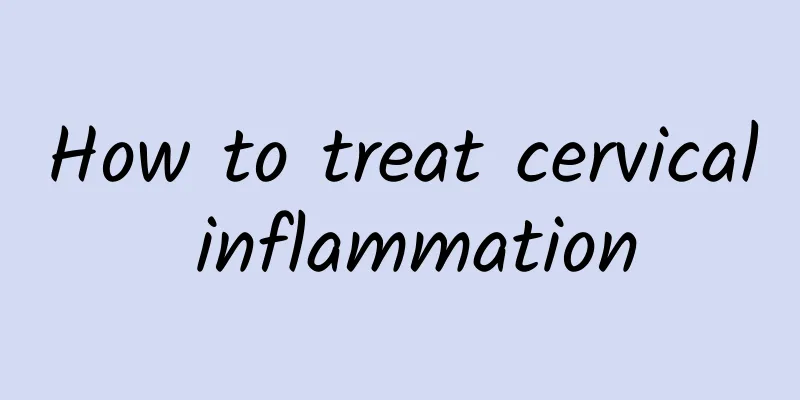How to treat vaginitis?

|
There are many factors that induce vaginitis in life. Vaginitis is also one of the gynecological diseases with a high incidence rate. Patients generally have no obvious clinical manifestations, and those with symptoms mainly show increased vaginal discharge and fishy odor, which has a significant impact on the patient's life. Therefore, timely treatment is necessary. So, how to treat vaginitis? 1. General treatment Keep the vulva clean and dry, and avoid scratching. Sexual intercourse is prohibited during treatment. Underwear and washing towels should be boiled for 5 to 10 minutes to kill pathogens, and sexual partners should be treated. (ii) Cleaning fluid Use 2% to 4% baking soda water to rinse the vagina 1 to 2 times a day, 2 weeks as a course of treatment. Use 0.5% to 1% lactic acid or acetic acid solution or 1:5000 potassium permanganate solution to rinse the vagina once a day. Use 1:5000 potassium permanganate solution for sitting baths twice a day, 15 to 30 minutes each time. 3. Drug treatment 1. Trichomonas vaginitis (1) Oral use of anti-trichomoniasis drugs, such as metronidazole, 200 mg each time, 3 times a day for 7 days. After taking the drug, if the test result of trichomonas is negative, the patient should continue treatment for one course after the next menstrual period to consolidate the therapeutic effect. (2) Metronidazole 2 g orally once, or metronidazole 400 mg 2 to 3 times a day for 7 consecutive days. If oral medication is not tolerated, vaginal administration can be used, metronidazole vaginal effervescent tablets 200 mg once a day for 7 consecutive times. 2. Nonspecific vaginitis (1) Metronidazole: 500 mg orally, twice a day, for 7 days. It can also be applied topically, 200 mg each time, inserted into the vagina, for 7 days as a course of treatment. (2) Clindamycin 300 mg orally twice a day for 7 days; or 2% clindamycin ointment vaginally once a night for 7 days. (3) It can be combined with estrogen ointment for local application, twice a day; nialestradiol can be taken orally, 4 mg for the first time, and then once every 2 to 4 weeks, 2 mg each time, for 2 to 3 months. 3. Candidal vaginitis (1) Imidazoles: Clotrimazole and tioconazole are the first choice in clinical practice. In the early stage, clotrimazole suppositories 100 mg/d were mostly used for vaginal insertion, with a course of treatment of 7 days. Recently, a single dose of 500 mg of clotrimazole lactic acid formula (trade name Canestin) is widely used for vaginal administration. The efficacy is better than before, it is more convenient to use, and the patient's compliance with the drug is also good. It can also be used by pregnant women. Tioconazole: The trade name is appropriate. Tioconazole vaginal ointment is administered in a single dose. It is easy to use, has few side effects, and has significant efficacy. It is administered once every night before going to bed using the attached applicator. The course of treatment is 3, 6 or 14 days. (2) Triazoles: Itraconazole: Trade name Sporanox, with a broad antifungal spectrum, rapid oral absorption, a half-life of 17 to 24 hours, and an antifungal efficacy 5 to 100 times better than ketoconazole. Common adverse reactions of itraconazole include gastrointestinal discomfort, headache, itching and rash. Fluconazole: Trade name Diflucan, a drug with a broad antibacterial spectrum, with a high oral capsule bioavailability of more than 90%. It should not be taken by breastfeeding women. (3) Polyenes: This is a class of antifungal drugs that was used earlier in clinical practice and is still widely used today. Among them, nystatin, candida albicans, and meparin have a strong effect on Candida albicans. In addition, for infants and young children with vulvovaginitis, oral antibiotics should be selected according to the pathogen, or antibiotic solution should be dripped into the vagina. For those with pinworms, deworming treatment should be performed. If there is a foreign body in the vagina, it should be removed in time. For those with adhesions of the labia minora, estrogen ointment can be applied externally, which can usually loosen them. In severe cases, the adhesions should be separated and antibiotic ointment should be applied. |
<<: How to treat irregular menstruation
>>: How to relieve menstrual cramps
Recommend
To get rid of stress-induced obesity, first take care of your autonomic nervous system! Chinese Medicine Practitioner Zhou Zonghan: "This 1 trick" helps relieve emotions
Obesity is most likely caused by too much stress!...
Experts explain the precautions for ectopic pregnancy surgery
With the increasing incidence of ectopic pregnanc...
There is a science to drinking water! Remember to drink water while exercising
Water is one of the most important nutrients that...
Post-marriage dysmenorrhea alerts uterine disease
We often hear the elderly say: Dysmenorrhea is ok...
Is second-degree cervical erosion serious? Which treatment method is more effective?
Is second-degree cervical erosion serious? Which ...
Does mild cervical erosion need treatment? Common knowledge about diseases related to mild cervical erosion in women
Nowadays, almost all women have gynecological dis...
Don’t throw away the celery leaves! The whole plant is more effective in preventing cancer
Celery is low in calories, rich in dietary fiber,...
The essential ingredients for eating hot pot in cold weather to lose weight
When it’s cold, having a pot of hot pot with a fe...
Which department does Tianjin Uterine Fibroid Hospital go to? Which hospital in Tianjin is good for treating uterine fibroids?
Which department does Tianjin Uterine Fibroid Hos...
Do I need to be hospitalized for an abortion?
Being a mother is a happy feeling. Due to various...
What are the precautions for abortion and what are the methods of abortion?
Abortion can cause great harm to a woman's bo...
Will eating hawthorn cause miscarriage? There needs to be a limit
Many people like to eat hawthorn, especially when...
Causes of Endometriosis
When it comes to endometriosis, the first thing y...
The harm of irregular menstruation to female friends
Irregular menstruation is also known as menstrual...
What causes threatened miscarriage?
Threatened abortion is mainly caused by the combi...









